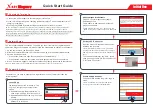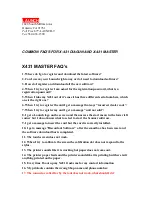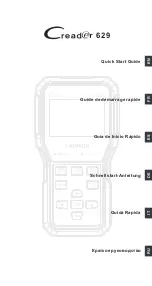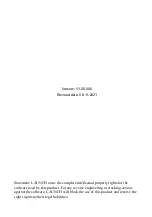
PROLIGHTS - SmartBat
Wash
02
SAFETY INFORMATION
WARNING!
• Please read carefully the instruction reported in this section before installing, powering,
operating or servicing the product and observe the indications also for its future handling.
Lithium-Ion Battery Maintenance Guidelines
Lithium-Ion rechargeable batteries products require routine maintenance and care in
their use and handling. Read and follow the guidelines in this document to safely use
Lithium-Ion batteries and achieve the maximum battery life span.
Misusing the battery projector may cause the battery to get hot, break, or ignite, and
cause serious injury.
Overview
• Only authorised technicians may service the battery.
•
Use only Prolights approved batteries in your Prolights products.
• Do not leave the projector unused for extended periods of time in storage.
•
Lithium-Ion batteries continue to slowly discharge (self-discharge) when not in use or
while in storage. Routinely check the battery’s charge status.
•
The typical estimated life of a Lithium-Ion battery is about two years or around 300
charge cycles, whichever occurs first. One charge cycle is a period of use from fully
charged, to fully discharged, and fully recharged again.
• For batteries that do not complete full charge cycles the life expectancy can be less
than two years also.
•
Rechargeable Lithium-Ion batteries have a limited life and will gradually lose their
capacity to hold a charge. This loss of capacity (ageing) is irreversible. As the battery
loses capacity, the length of time it will power the product (run time) decreases.
Battery Maintenance
•
The run time of your battery will vary depending on the product’s configuration and
the applications that you run.
• Routinely check the battery’s charge status.
• Carefully monitor batteries that are approaching the end of their estimated life.
• It is mandatory to replace the battery with a new one to prevent eventual risk of over
-
heating and subsequent explosion, if you note either of the following:
1. The battery run time drops below about 70% of the original run time.
2.
The battery charging time increases significantly.
3. The projector heats up while charging beyond normal temperatures.
4. In case of any collisions, falls, particular thermal stresses.
• If a battery is stored or otherwise unused for an extended period, be sure to follow
the storage instructions in this document.
• Always recharge immediately when the battery is low.
• If you do not follow the instructions, and the battery has no charge remaining when
you check it, consider it to be damaged. Do not attempt to recharge it or to use it.
Replace it with a new battery.





































